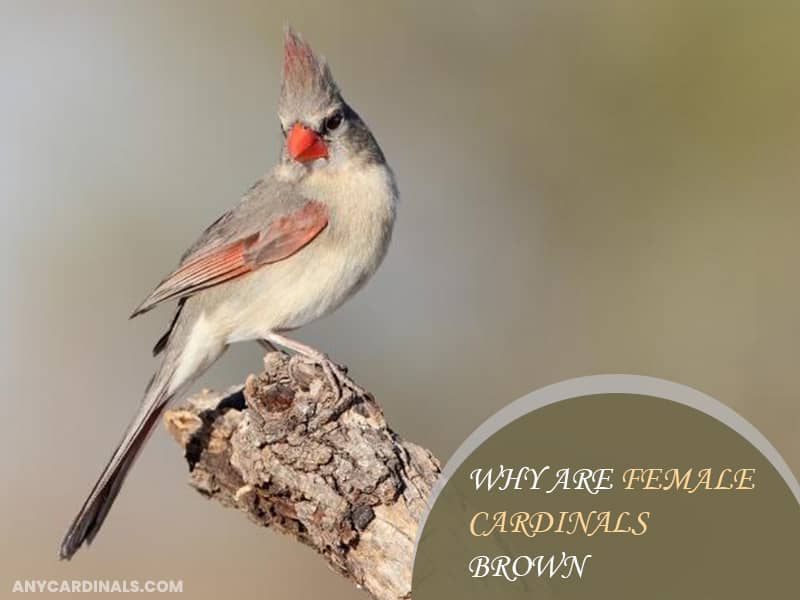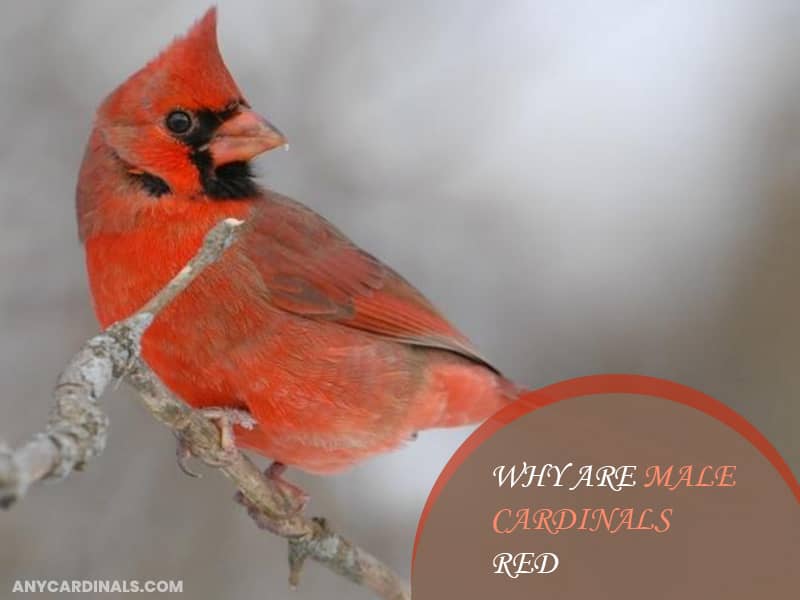Why Are Male Cardinals Red And Females Brown?
Cardinals are one of the most stunning bird species that capture birders’ attention. Bird watchers love to observe varied colored cardinals, but while watching, some bird lovers wonder why cardinals have different colored feathers.
Some even wonder, “Why are red and females brown?” Well, cardinals’ feather color is nature’s selection, and if we talk scientifically, some chemical compounds are responsible for allowing cardinals to develop specific colored plumage.
Anyway, in this blog post, we have briefly discussed why cardinals come with varied colored feathers. So, without delaying more, let’s read.
Check out these related blogs:
How Do Cardinals Get Their Feathers’ Colors?
In essence, birds get their color from three natural substances: melanin, porphyrins and carotenoids. Humans and birds have melanin, which gives their skin black, brown, and buff colors.
In contrast, porphyrin helps beings achieve brownish and reddish hues, and carotenoids are responsible for creating bright red, orange and yellow colors.

So, the northern male cardinals get their plumage colors from carotenoids, which they receive from dining on carotenoid-rich foods such as berries.
Speaking of the female cardinals, they develop their feather colors with the help of melanin, porphyrins and carotenoids. All these pigments work together to give these birds different colors, including pale brown, black, warm reddish, red-orange, etc.
So, now you understand why male and female cardinals are different in colors. The reason behind their distinct colored plumage is their pigments. But apart from this cause, there are other natural reasons why cardinals pose varied colored feathers. Let’s discover those causes.
Why Are Female Cardinals Brown?
First, it’s a natural selection, and secondly, this color pattern helps female cardinals hide easily in the woods. Cardinals’ pale brown color keeps them unnoticed by intruders and predators.

Besides, this color helps male cardinals identify the opposite sex and find their desired mates. These are the two known natural reasons why female cardinals have different-colored feathers.
Why Are Male Cardinals Red?
It is said that for male cardinals, the redder, the better. Male Cardinals with striking red-colored plumage attract female birds more easily than their dull-colored competitors.

However, scientists believe that the male cardinal’s red feathers tell females that he has everything to produce healthy and superior offspring.
Alongside that, the bright red plumage indicates that the male cardinal has better immunity, foraging ability and skill at fending off predators. So, this is one of the significant reasons why males boast red feathers.
How Can You Help Cardinals Maintain Their Stunning Plumage Colors?
If cardinals often visit your backyard, there are certain things you can do to keep those birdies healthy and colorful. First, you shouldn’t cut down trees that provide cardinals with fruits they love. FYI, cardinals prefer eating grapes, dogwood berries, raspberries, and apples.

Hence, you need to take good care of those fruit trees in your backyard or garden instead of chopping them down. Secondly, you can feed cardinals black oil sunflower seeds, especially in the winter, as cardinals don’t get enough protein from food sources during this period.
Alongside offering black sunflower seeds, you can give them a mix of safflower and sunflower seeds. By doing so, you can help those birdies receive enough nutrients from food and help them stay healthy and cheerful.
Wrapping Up:
So, now you know why cardinals come in different colors. Next time someone asks you why cardinals boast distinct colored feathers, you don’t need to guess the answer.
Here’s a quick recap: mainly, the pigment cells help cardinals achieve varied plumage colors. However, we hope you have learned something new today through our blog post. If you did, you might share it with your friends on Facebook, Twitter & Pinterest. That’s all for this article.

